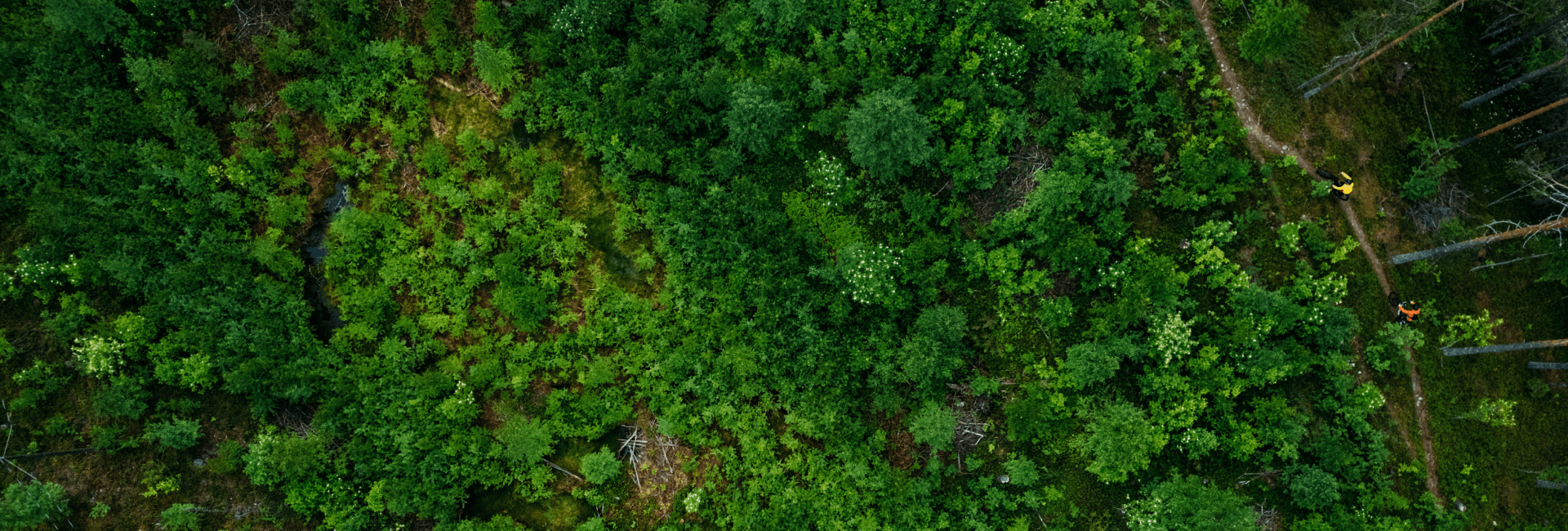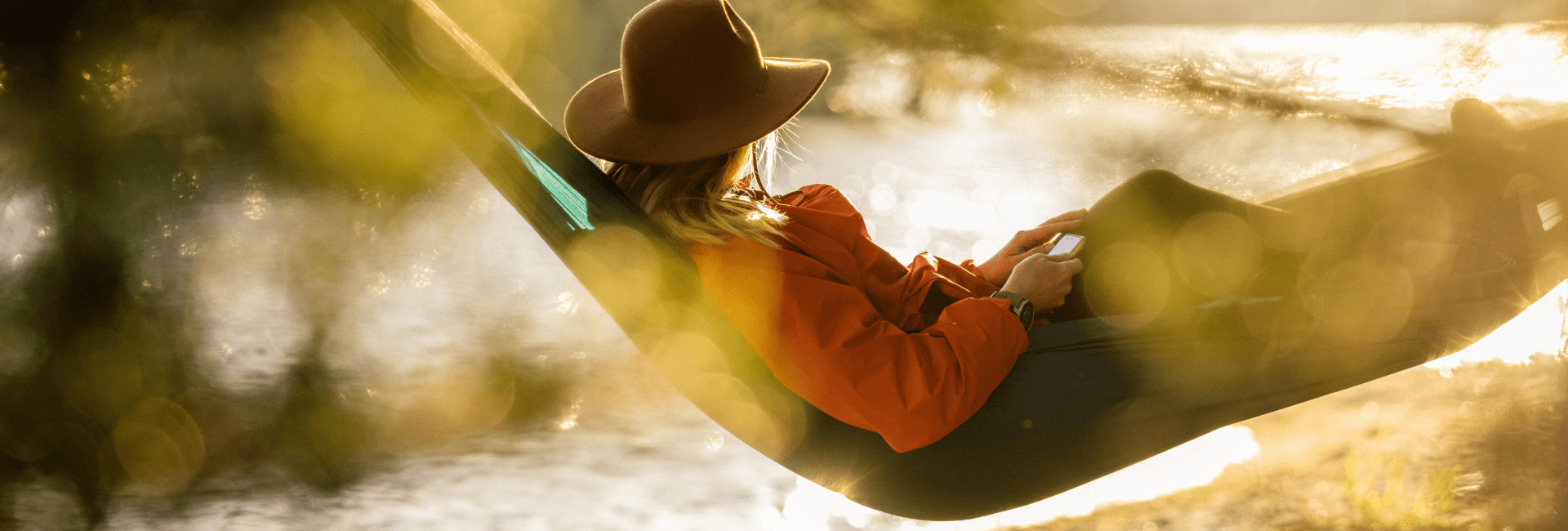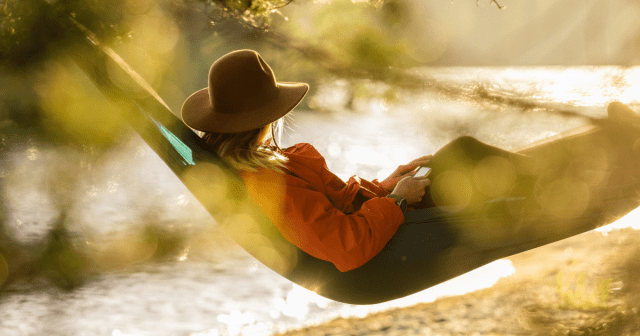I didn’t expect on my last trip home to Australia to end up hugging an Eucalyptus tree and having a bit of a moment with it. Until then, it wasn’t something I was prone to doing. Yet, this is what I experienced in my first forest therapy session.
A friend suggested we try it at Cranbourne Gardens, 363 hectares of untouched heathlands, wetlands, and woodlands on the outskirts of ever-expanding Melbourne. Here, they offer a monthly forest therapy experience on a Sunday as “an evidence-based, cost-effective and natural remedy” for improving your overall health and wellbeing.
The date happened to coincide with the second anniversary of the passing of a dear friend during the pandemic. So, it felt like this may be a good place to sit with all the feelings that were likely to come up for me that day.
What I didn’t anticipate was that I would come to see the forest as its own entity rather than the setting for my experience. A living thing that I could engage with on a micro-level rather than a location where I could pass through.
What I didn’t anticipate was that I would come to see the forest as its own entity rather than the setting for my experience. A living thing that I could engage with on a micro-level rather than a location where I could pass through (as is often the way I experience green spaces). It was strange to think that the philosophy for the forest therapy I was participating in, here in the dry, wild bushland of Australia, is actually inspired by a very different culture and environment.
Shinrin-yoku, the art of forest bathing
Japan is the third most forested country in the world after Finland and Sweden, with around 69% of its land covered in native and historic woodlands. This verdant abundance reflects their cultural connection with nature, which can be seen in everything in Japan, from religion to cuisine to government policy.
The term Shinrin-yoku was coined by the Japanese Ministry of Agriculture, Forestry, and Fisheries in 1982. It translates as “taking in the forest atmosphere” or “forest bathing” and was proposed as a therapeutic means to counteract the impact of urbanization and technologization on our mental health.
These days, Japan has over 60 forest therapy centers across the country with specialized guides and trails. They’ve led the way for therapeutic practices that involve immersion in nature to develop in many other countries across the world, adopting similar approaches for boosting mental and physical wellbeing.
Research into the benefits of forest therapy practices also began in Japan around 40 years ago. As a 2010 study from Chiba University found, this type of exposure to “forest environments promote lower concentrations of cortisol, lower pulse rate, lower blood pressure, greater parasympathetic nerve activity, and lower sympathetic nerve activity than (in) city environments.”

Slow down. This isn’t a hike
I don’t know exactly what I expected from my first forest therapy session. Perhaps a lovely walk. See some of Australia’s unusual plants. Do something active with my heavy feelings.
I could have easily gone on a long hike with my friends that day. Raised our heart rates and saw some beautiful scenery together. Quietly bonded over what we were experiencing both externally and internally. This would have suited me as someone who goes on a long walk most days. However, as the session information indicated, we would be covering around 1.5 km (just under a mile) in two hours, so this was going to have a slightly different pace.
The ‘bathing’ element of Shinrin-yoku gives you a sense of how you’ll be interacting with the forest. The objective is finding ways to experience your natural surroundings through all your senses.
The ‘bathing’ element of Shinrin-yoku gives you a sense of how you’ll be interacting with the forest. The objective is finding ways to experience your natural surroundings through all your senses. The therapy session opened with a grounding session, where we all stood in silence, tuning our ears into the gentle wind in the trees and the occasional cacophony that is Australian bird life while feeling a strong sense of the ground underneath our feet.
Five senses in the forest
Much of what forest therapy involves encourages you to be present in your body. Our guide had us interacting with nature in a way that is rare for me on my typical walks through green spaces. She had us touching different leaves to get a sense of their texture. Using a magnifying glass to see the tiny detail on flowers. Taking in the scale of enormous slabs of slate rock that jutted out of the ground. Sitting by a small stream, listening to the water cascading over the rocks like it has somewhere very important to be.
Much of what forest therapy involves encourages you to be present in your body. Our guide had us interacting with nature in a way that is rare for me on my typical walks through green spaces. She had us touching different leaves to get a sense of their texture.
The moment from my forest therapy session that has remained most clear in my mind was when our guide suggested that we select a tree from a small gathering of Eucaplytus varieties and hug it. I don’t know about you, but I feel a little awkward embracing a tree generally, especially in front of others. It does feel a little odd and strangely intimate, and perhaps the idea that being a “treehugger” is somehow negative doesn’t help.
The reality is that hugging a tree can be an incredibly grounding experience and something that my current therapist is always trying to get me to do. I particularly enjoyed it that day because Eucaplytus trees are so smooth and lean. I was so full of emotions that pressing my heart against something so solid and rooted in the earth allowed a wave of calm assurance to wash over my nervous system.
Taking your time
Most information about forest therapy recommends that you take somewhere between two to four hours to fully immerse yourself in your natural surroundings and allow your mind and body to reap the benefits. Some places offer both a guided and self-guided option, which reportedly have different outcomes, according to a 2021 study.
I feel like I really benefitted from the guided experience, as it was my first time engaging with a green space in this way. However, I would happily do a longer self-guided session or even try a combination of both, where a guide spends time helping me to get into the right headspace to engage with this different environment, followed by some time on my own to keep exploring or “bathing.”
If you live in a major city with little to no access to larger green spaces, then I highly recommend looking for a forest therapy experience near your city or perhaps on your next holiday. It really changed the way I see and experience nature, especially helping me to stop and engage with it rather than seeing it as a nice space that I pass through.
I also feel like it would be interesting to return to the same forest in four different seasons to understand how it changes and find peace with the same rhythms that exist within yourself as well. And, who knows, it’s probably quite lovely to keep hugging the same tree. I guess you’ll have to find out for yourself.
If you liked this post, don’t forget to share so that others can find it, too.
Please note that the information provided in the Polar Blog articles cannot replace individual advice from health professionals. Please consult your physician before starting a new fitness program.





